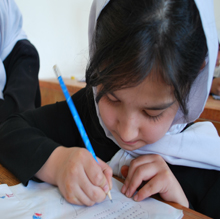The events of August 15, 2021, triggered a sharp contraction and reconfiguration of the Afghan economy and approaches to international aid. Reduced aid drove a steep decline in aggregate demand and widespread disruptions to public services. Afghanistan lost access to the international banking system and offshore foreign exchange reserves as the central bank assets were frozen. Disruption and uncertainty led to sharp declines in investment confidence, and tens of thousands of highly skilled Afghans fled the country.
Following two years of severe contraction, Afghanistan’s economy has shown modest growth primarily driven by private consumption. GDP growth of 2.7% in 2023/24 has recouped only about 10% of past economic losses, indicative of the slow and fragile nature of the recovery.
This level of growth has done little to address deeper structural issues and significant vulnerabilities within Afghanistan’s economy. Enabling women’s participation in the economy, strengthening domestic resource mobilization, maintaining price stability, and addressing critical deficits in human capital—particularly in education and healthcare, and especially for women—will be essential for long-term recovery and reducing vulnerability to future shocks.
The partial recovery, coupled with falling food prices, has contributed to a gradual improvement in household welfare. But most Afghan households continue to struggle to meet basic needs and poverty remains widespread. Vulnerable groups, including women, children, and displaced populations, continue to bear the brunt of the economic hardship, due to the lack of social protection mechanisms.
Despite improvements in reported welfare, the economic recovery has been uneven, with rural centers benefiting more than urban areas. The lack of job opportunities, coupled with ongoing displacement of population, has exacerbated regional disparities. Moreover, high levels of informal labor and the limited formalization of businesses restricts access to secure livelihoods and social safety nets, further deepening poverty for millions of Afghans.
Afghanistan’s economic outlook remains highly fragile with a very limited revenue base. The country’s high trade deficit, dependence on imports, and shrinking fiscal space present formidable challenges to sustainable recovery, and key sectors such as agriculture remain vulnerable to the effects of climate change, insecurity and a lack of investment, further complicating the recovery process.
Last Updated: Feb 09, 2025

